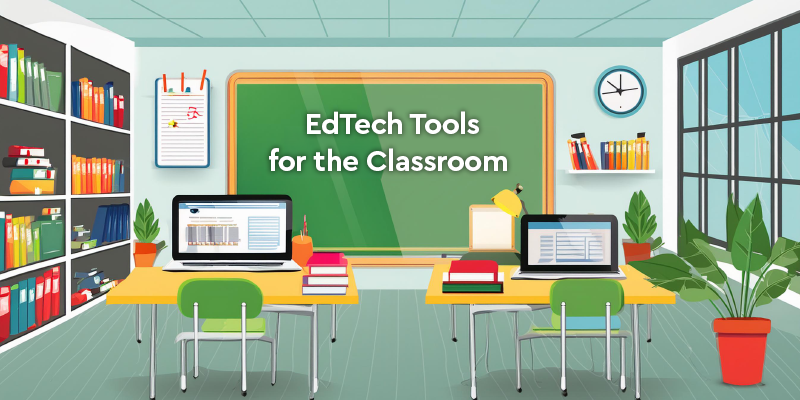
The Value of EdTech Tools for the Classroom for Educators
EdTech tools for the classroom play an increasingly crucial role in schools today across Dubai and other regions. From interactive learning platforms to collaborative online tools, educators have a wealth of resources at their disposal to enhance student engagement and understanding. However, not all teachers feel entirely comfortable integrating technology into their classrooms. This blog post aims to empower educators of all levels by offering practical tips to become more technology-friendly and unlock the vast potential of educational technology (EdTech).
Understanding the Benefits:
The first step towards tech-friendliness is appreciating the benefits it brings to the classroom.
- Personalized learning: Tailored online programs and applications cater to individual learning styles and paces, ensuring no student falls behind or gets bored.
- Increased engagement: Interactive activities, simulations, and gamified learning experiences spark curiosity and make learning fun.
- Enhanced collaboration: Online platforms foster collaboration beyond classroom walls, allowing students to work together on projects with peers across the globe.
- Critical thinking skills: Technology empowers students to research, analyze information, and solve problems independently.
- Improved communication: Digital tools facilitate communication between students, teachers, and parents, fostering a more connected learning community.
By embracing technology, educators can create a dynamic and engaging learning environment that caters to the needs of the 21st-century learner.
Building Your Tech Toolkit:
Now that you understand the advantages, it’s time to build your tech toolbox. Here’s how:
- Start Slow: Don’t overwhelm yourself – begin by exploring a few user-friendly EdTech tools for the classroom like video tutorials, quizzes, educational games, and collaborative whiteboards.
- Seek Professional Development: Many schools offer professional development opportunities focused on EdTech integration. These programs can equip you with the necessary skills and confidence to use various tools effectively.
- Connect with Tech-Savvy Colleagues: Learn from experienced colleagues who have successfully integrated technology into their classrooms. Observe their teaching methods, ask questions, and tap into their knowledge.
- Explore Online Resources: A plethora of online resources, tutorials, and webinars cater to educators of all tech levels. Utilize these resources to learn about new tools and various EdTech tools for the classroom.
Developing a Tech-Positive Mindset:
Embrace a mindset and treat challenges as opportunities to learn.
- Don’t Be Afraid to Experiment: Trying new technologies can be intimidating, but remember, everyone starts somewhere. Embrace the learning process and explore different tools with an open mind.
- Focus on Learning Outcomes: Technology should never be the sole focus of a lesson. Ensure it complements your teaching style and curriculum objectives.
Seek Help When Needed: Don’t hesitate to ask for help from tech-savvy colleagues, IT professionals, or students. Learning is a collaborative process, and everyone can contribute.
Integrating Technology Effectively:
Once you feel comfortable with basic tools, consider how to integrate them seamlessly into your lesson plans. Here are some key strategies:
- Align Technology with Learning Goals: Technology should enhance the learning process, not replace it. Choose EdTech tools for the classroom that directly complement current curriculum objectives. Let’s take Purple Mash as an example. This platform is a treasure trove for primary schools and includes engaging activities across English, math, coding & science.
- Plan for Technical Glitches: Technology can be unpredictable. Have a backup plan and alternative activities for contingencies such as internet outages or software malfunction.
- Embrace Blended Learning: Technology can be used to enhance traditional classroom instruction. Consider using online resources for independent learning activities or flipped classrooms.
EdTech Tools for the Classroom:
EdTech tools for the classroom are not a replacement for a skilled educator, but a powerful tool to enhance the learning experience. By embracing a tech-positive mindset, building your tech toolkit, and integrating technology strategically, educators can create dynamic and engaging learning environments that prepare students for success in today’s world. Remember, the journey of becoming a tech-friendly educator is a continuous process of learning and exploration. Embrace the challenge, and watch your students thrive in this digital age!






Recent Comments